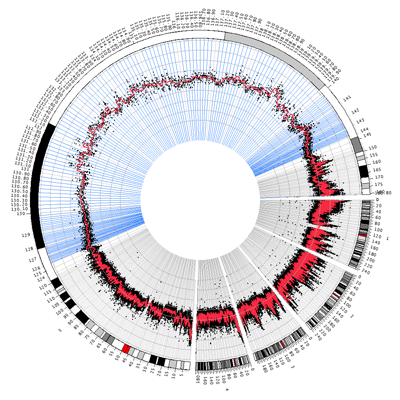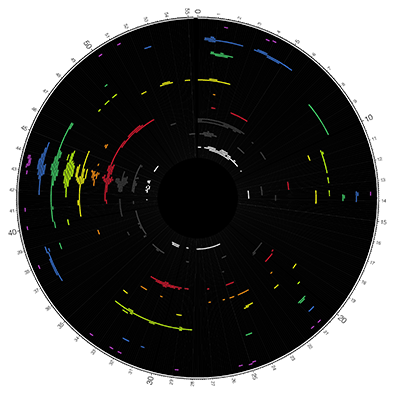First
"Data is the new oil" seems to be a phrase that was popular in the big data world a while back, but it's quite meaningful. Oil (data) holds immense value, but it's useless unless processed, and leaks can be disastrous. That's the metaphor, apparently. Today, the fusion of "data" and "creative" is accelerating rapidly. Cannes Lions has even introduced a new "Creative Data" category, suggesting lively discussions are brewing about what makes data creative and what constitutes data that can be used creatively.
This column serves as a super-introductory guide to creative data. While I'm certainly no data scientist and can't speak authoritatively on data itself, I'll share my own thoughts on how to process "data" and transform it into "creative" value.
What is Creative Data?
While there's no clear definition yet, I'd first like to draw a line between "digital creative" and "creative data."
For several years now, digital signage and products utilizing interactive or AR technologies have been gaining attention. For example, memorable works from the 2014 Cannes Lions include "The Social Swipe" (which provided donors using credit cards with intuitive visual feedback on the value of their donation) and "Blowing in the Wind" (a shampoo ad where hair blows in the subway wind). These are essentially examples of "digital creative" using digital technology.
So what is "creative data"? Also from Cannes 2014, examples include "Magic Of Flying" (an outdoor ad displaying flight numbers and destinations when a boy points at an airplane) and projects like recreating past driving experiences using historical vehicle data.
What these share is placing the data itself at the core of the creative expression. They aren't creatives that use data as a seed for ideas; instead, they creatively transform and present the inherent value of the data itself. They achieve this through excellent storytelling and execution.
"Data is the new soil."
This was stated by David McCandless at the 2010 TED Conference. The vast amount of data that has spread across the internet over many years has been cultivated by countless hands through network connections. What ideas will we plant in this rich soil of data, and with what execution will we nurture them? We look forward to the flowers that future data creatives will bring forth.
Creative Data and Technology
From here, I want to write about the potential of technology, which is indispensable for transforming data into creativity.
① Visualization (Infographics/Data Visualization)
Data holds little value for the general public unless processed. To deliver data as valuable information or to evoke emotion, it must first be made visible.
Excellent data visualization intuitively conveys vast amounts of information. By designing the information, making important patterns and relationships visible, meaning is highlighted and the story is communicated.

Visualizing Circular Genomes with Circos
② Audible Representation (Sonification)
Sonification is an unfamiliar term, but it's a concept used in UI design and other fields. It involves converting data into sound to make it perceptible. Familiar examples include the electronic beeps measuring heart rate in hospitals and the operational sounds of mobile phones, both considered forms of sonification.

Exhibition view at Sapporo International Art Festival 2014 using 4KVIEWING®
Photo: Keizo Kioku, Courtesy of Creative City Sapporo International Art Festival Executive Committee
Ryuichi Sakamoto + Daito Manabe "Sensing Streams - Invisible, Inaudible" (Excellence Award, Art Division, 18th Japan Media Arts Festival) is an art piece that converts electromagnetic waves imperceptible to humans into images and sound through "visualization" and "audibility." Creative data-driven works are emerging in various forms within the art world as well.
③ Experientialization
Following "visible" and "audible" data, the emergence of "smellable" and "tasteable" data seems like a near-future development. Research-level achievements already exist. Combining various technologies to evolve data into more experiential forms may well be the path forward for creative data.
Finally, here are two additional examples of converting data into more experiential value.
"Touchable Search"
"Yahoo Trend Coaster"
(Source: Yahoo Japan)
3D printers, said to bridge the digital and physical worlds. Virtual reality technology that allows immersion into data spaces. Both are examples of creative data that tell stories of transforming data into tangible experiences.
The Future of Data and Creativity
The future of data is straight out of science fiction. While it's a bit unsettling to hear that by 2045, the ever-growing volume of data will cause computer capabilities to vastly surpass the collective intelligence of humanity, as someone involved in advertising, I want to keep a close eye on what creative data makes possible.
That concludes the sixth installment of our "Inspiring Technologies" column, focusing on "Creative Data."
Dentsu Inc. Experience Technology is a technology group actively creating unprecedented emotional experiences (experiences) by combining various technologies, both digital and analog.
Even ideas that seem impossible to realize may find a path to implementation through technology.
Feel free to contact us at et-info@dentsu.co.jp (Attn: Yoneyama/Murakami) with any opinions, inquiries, or consultations.




